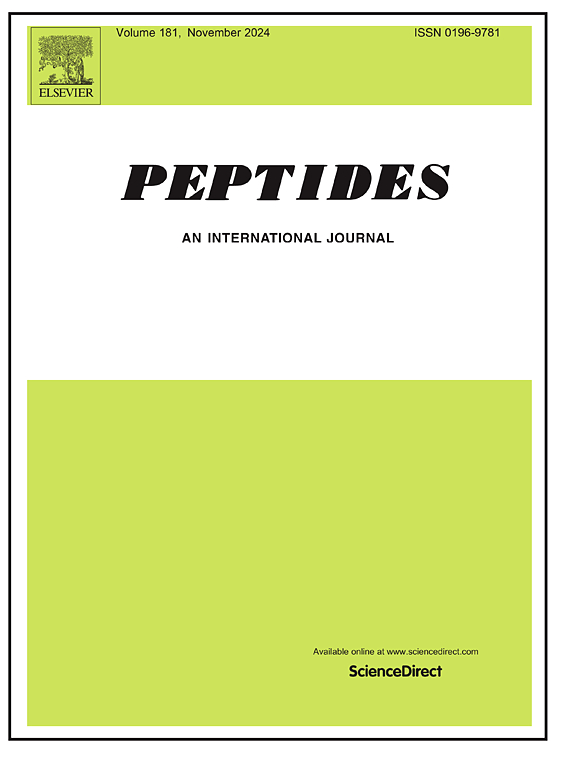钙调素融合制备同位素标记的人α-防御素5及其表达增强研究
IF 2.9
4区 医学
Q3 BIOCHEMISTRY & MOLECULAR BIOLOGY
引用次数: 0
摘要
人α-防御素5 (HD5)是一种富含半胱氨酸的抗菌肽,对肠道先天免疫至关重要,其结构和功能特性已被广泛研究。还原形式(HD5red)和氧化形式(HD5oxi)都存在于体内,并表现出不同的抗菌活性谱。在这项研究中,我们建立了一种高效的方法,利用与抗菌肽相互作用的钙调蛋白(CaM)作为融合伙伴,在大肠杆菌(e.c oli) BL21 (DE3)菌株中过表达重组HD5。融合表达抑制了HD5的降解,降低了其对宿主细胞的毒性。在纯化融合蛋白和酶切释放HD5区域后,我们成功地获得了足够数量(产量1.5-1.7mg/L)的活性重组HD5oxi和HD5red,用于各种应用,包括用于核磁共振分析的稳定同位素标记肽。此外,我们利用CD和核磁共振光谱、结构预测和分子动力学模拟研究了CaM融合的保护作用和二硫键形成的机制。我们的研究结果表明,在融合状态下,CaM和HD5区域之间适当的相互作用强度是稳定生产的关键因素。本文章由计算机程序翻译,如有差异,请以英文原文为准。
Recombinant production of isotope-labeled human α-defensin 5 via calmodulin fusion and insights into its expression enhancement
Human α-defensin 5 (HD5), a cysteine-rich antimicrobial peptide critical for intestinal innate immunity, has been extensively studied for its structural and functional properties. Both the reduced form (HD5red) and the oxidized form (HD5oxi) exist in vivo and exhibit distinct antimicrobial activity spectra. In this study, we developed an efficient method to overexpress recombinant HD5 in Escherichia coli (E. coli) BL21 (DE3) strain by using calmodulin (CaM), which also interacts with antimicrobial peptides, as a fusion partner. Fusion expression suppressed the degradation of HD5 and reduced its toxicity to host cells. Following purification of the fusion protein and enzymatic cleavage to release the HD5 region, we successfully obtained sufficient amounts (yielding 1.5–1.7 mg/L culture) of active recombinant HD5oxi and HD5red for various applications, including stable isotope-labeled peptides for NMR analysis. Furthermore, we investigated the protective effect of CaM fusion and the mechanism of disulfide bond formation using CD and NMR spectroscopy, structural prediction, and molecular dynamics simulations. Our results suggest that the appropriate interaction strength between CaM and the HD5 region in the fusion state is a key factor for stable production.
求助全文
通过发布文献求助,成功后即可免费获取论文全文。
去求助
来源期刊

Peptides
医学-生化与分子生物学
CiteScore
6.40
自引率
6.70%
发文量
130
审稿时长
28 days
期刊介绍:
Peptides is an international journal presenting original contributions on the biochemistry, physiology and pharmacology of biological active peptides, as well as their functions that relate to gastroenterology, endocrinology, and behavioral effects.
Peptides emphasizes all aspects of high profile peptide research in mammals and non-mammalian vertebrates. Special consideration can be given to plants and invertebrates. Submission of articles with clinical relevance is particularly encouraged.
 求助内容:
求助内容: 应助结果提醒方式:
应助结果提醒方式:


